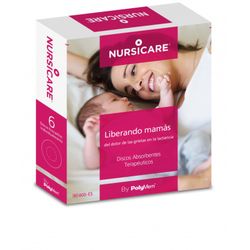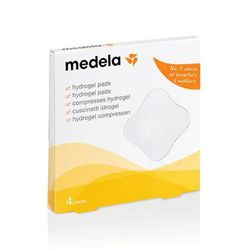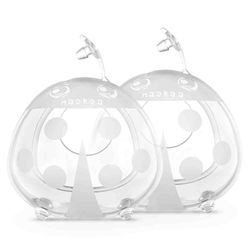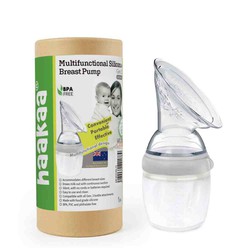Polymem Nursicare Sterile Dressing Nipple Cracks 6 Units
Brand: Nursicare
Reference: 180500.3
Description
Nusicare is a multifunctional polymeric dressing/pad specifically designed to minimize nipple pain in lactating women. Reducing the extra sensitivity that comes with starting to breastfeed is vital to enjoying breastfeeding. In addition, Nursicare pads clean and fill the crack bed, accelerating the healing process.
Details
Donning and changing protocol:
- Place the Nursicare pad over the nipple with the text-printed side facing out.
- It is important that the pad is in contact with the crack, so depending on its location it is recommended to even make an incision in the pad adapting it to the contour of the nipple.
- It is not necessary to fix the dressing with no additional elements since with the pressure of the bra it should be enough to stay in place.
- At the time of breastfeeding, the breast pad should be removed and placed on a clean surface with the inside facing up so as not to contaminate it.
- Nursicare can be reused several times until saturated with breast milk. The exact duration will depend on each woman and the milk leaks she is experiencing during lactation.
Mode of action:
When NURSICARE® is placed on sore nipples, the components of the disc work in total synergy to reduce pain, inflammation and promote the healing process.
The components of the NURSICARE® dressings come into operation with humidity, so it is advisable to moisten the affected area with a few drops of water. Due to its composition and how it would affect functioning, it is not recommended to use breast milk.
Each component has its specific function:
- The non-aggressive, non-toxic, non-ionic cleaning agent (F-68 surfactant) is gradually released into the crack bed.
- Glycerin (also known as glycerol) acts as a moisturizer from within the dressing, preventing the dressing from sticking to the chest and crack. Glycerin also improves skin hydration, optimizes skin elasticity, aids in epidermal repair, and provides a protective skin barrier against irritating stimuli.
- The polyurethane membrane matrix absorbs up to ten times its weight in fluids and liquids, usually breast milk due to the ejection reflex, but could also be exudate from the crevice. The pad is removed in one piece and does not break or leave any residue on the bed. The superabsorbent starch copolymer absorbs and binds the water molecules of the wound itself, allowing growth factors and natural nutrients to concentrate in the crack bed.
- The thin semi-permeable film on the outside acts as a barrier for liquids and other contaminating agents, allowing the exchange of gases (O2 and CO2) while maintaining the ideal vapor transmission ratio (MVTR) in order to optimize the appropriate moisture for the healing of the crack.
- Do not add any lotion or cream.
CONTRAINDICATIONS:
- NURSICARE® dressings are not compatible with sodium hypochlorite solutions. Do not add any lotion or cream.
- NURSICARE® dressings are not washable. Washing would remove materials and therefore modify its effects.
Videos (1)

Comments
Questions
Find more products in
Our customers trust us












